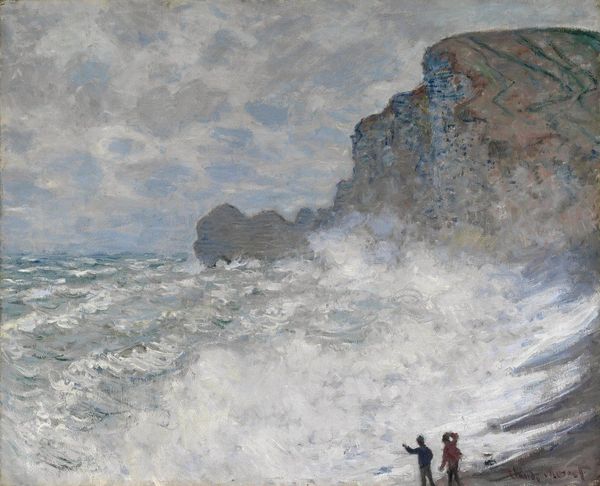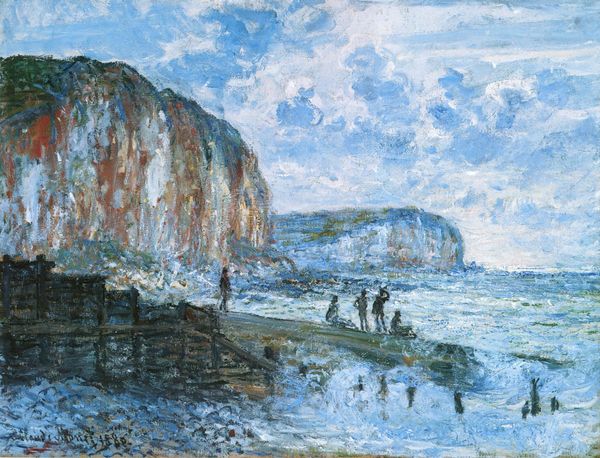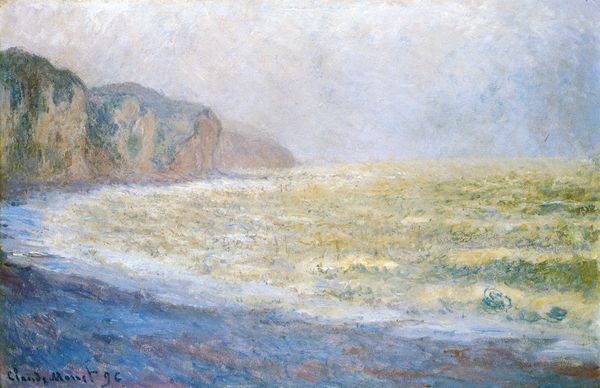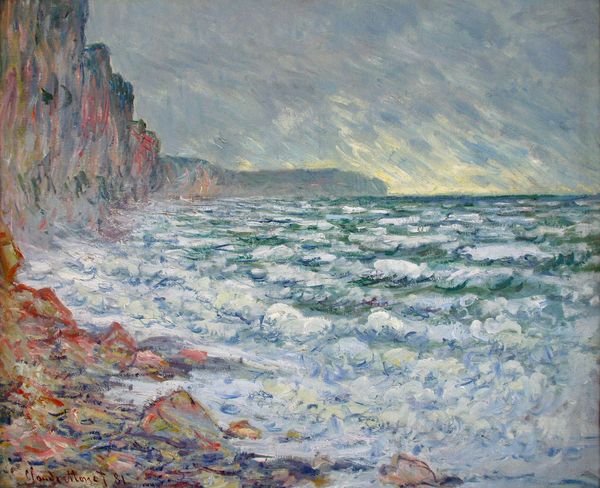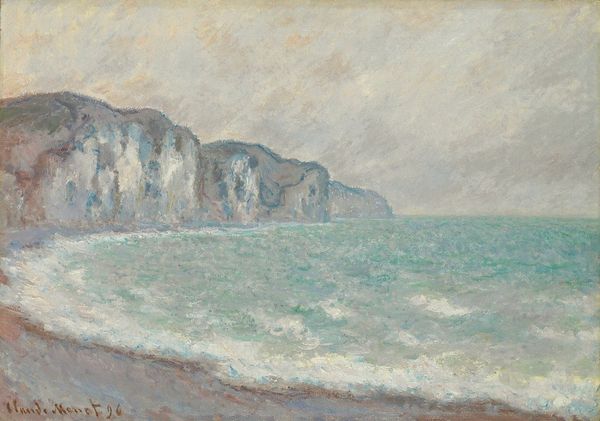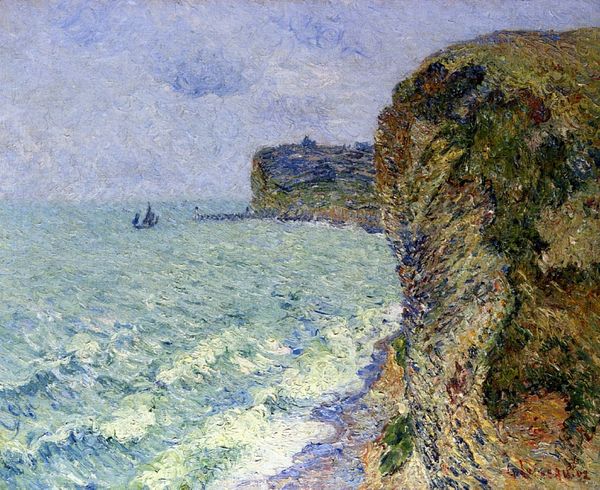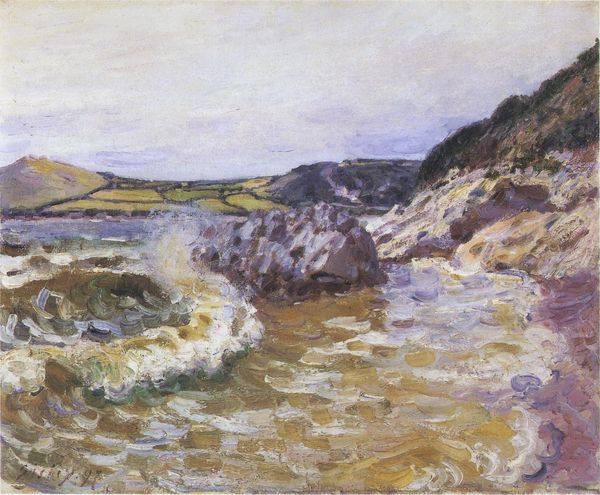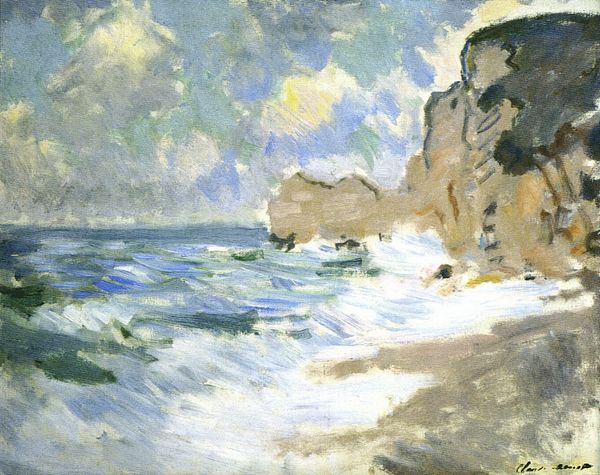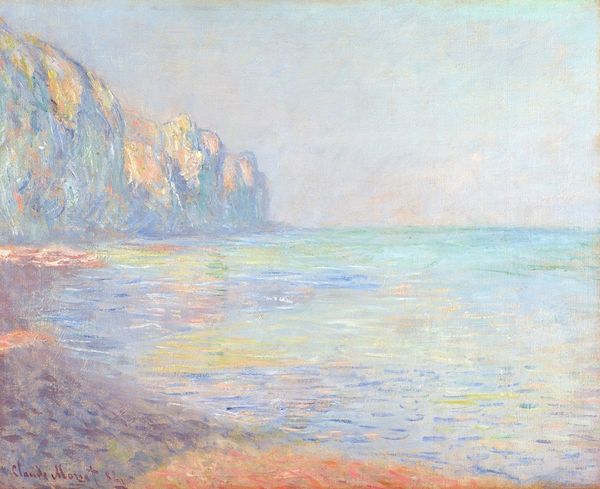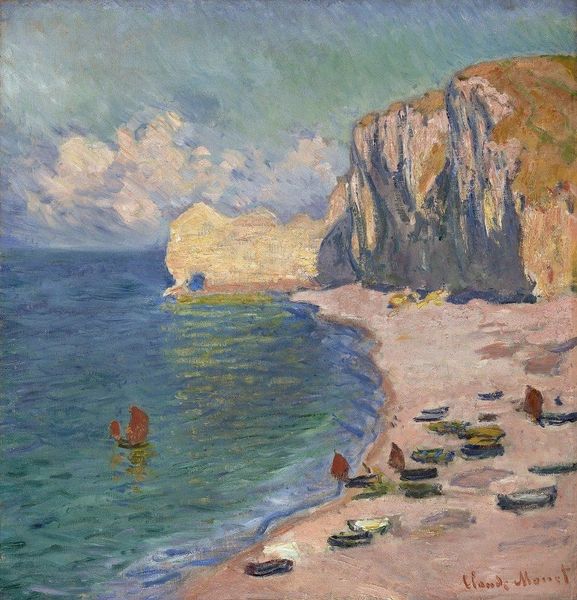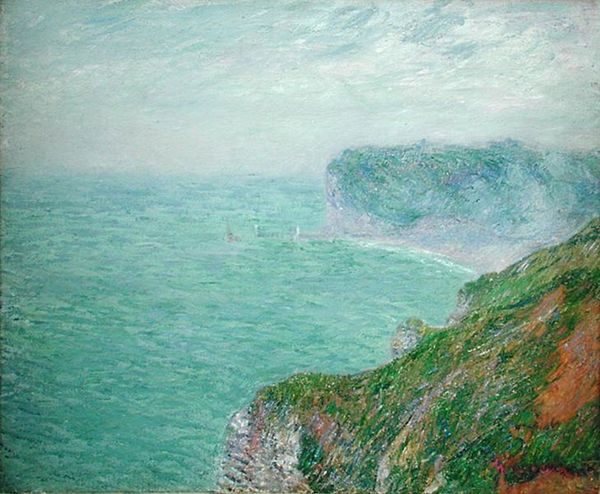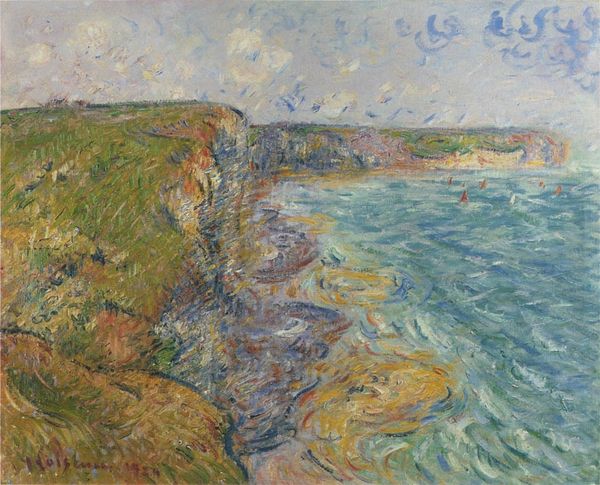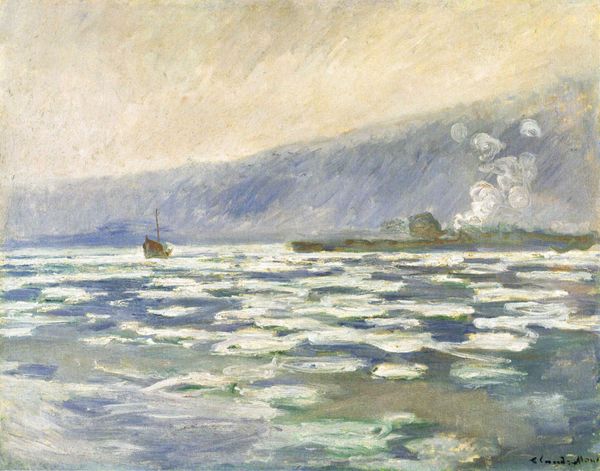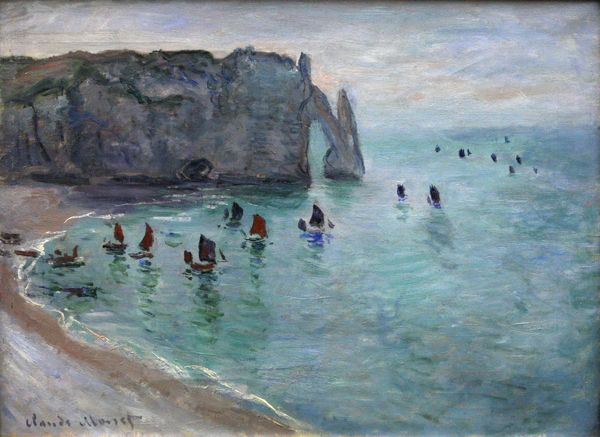
Copyright: Public Domain: Artvee
Claude Monet made this painting of the heavy sea at Pourville using oil paint on canvas. The material qualities of oil paint – its viscosity, luminosity, and ability to blend – are central to the artwork's atmospheric effect. Monet applied the paint in short, broken brushstrokes to capture the transient effects of light and movement on the water, sky, and cliffs. Look closely, and you will see how the strokes of color blend together, creating a sense of depth and vibration. Monet’s technique reflects a shift in artistic practice, towards capturing fleeting sensory experiences. As industrialization increased the availability of portable materials, like paint in tubes, it was easier for artists to work outside the studio and engage directly with their environment. He was not only an artist, but also a kind of artisan, who manipulated his materials with sensitivity and skill. Ultimately, the painting's value lies in its masterful manipulation of materials and processes. It challenges traditional hierarchies that separate fine art from craft.
Comments
No comments
Be the first to comment and join the conversation on the ultimate creative platform.
